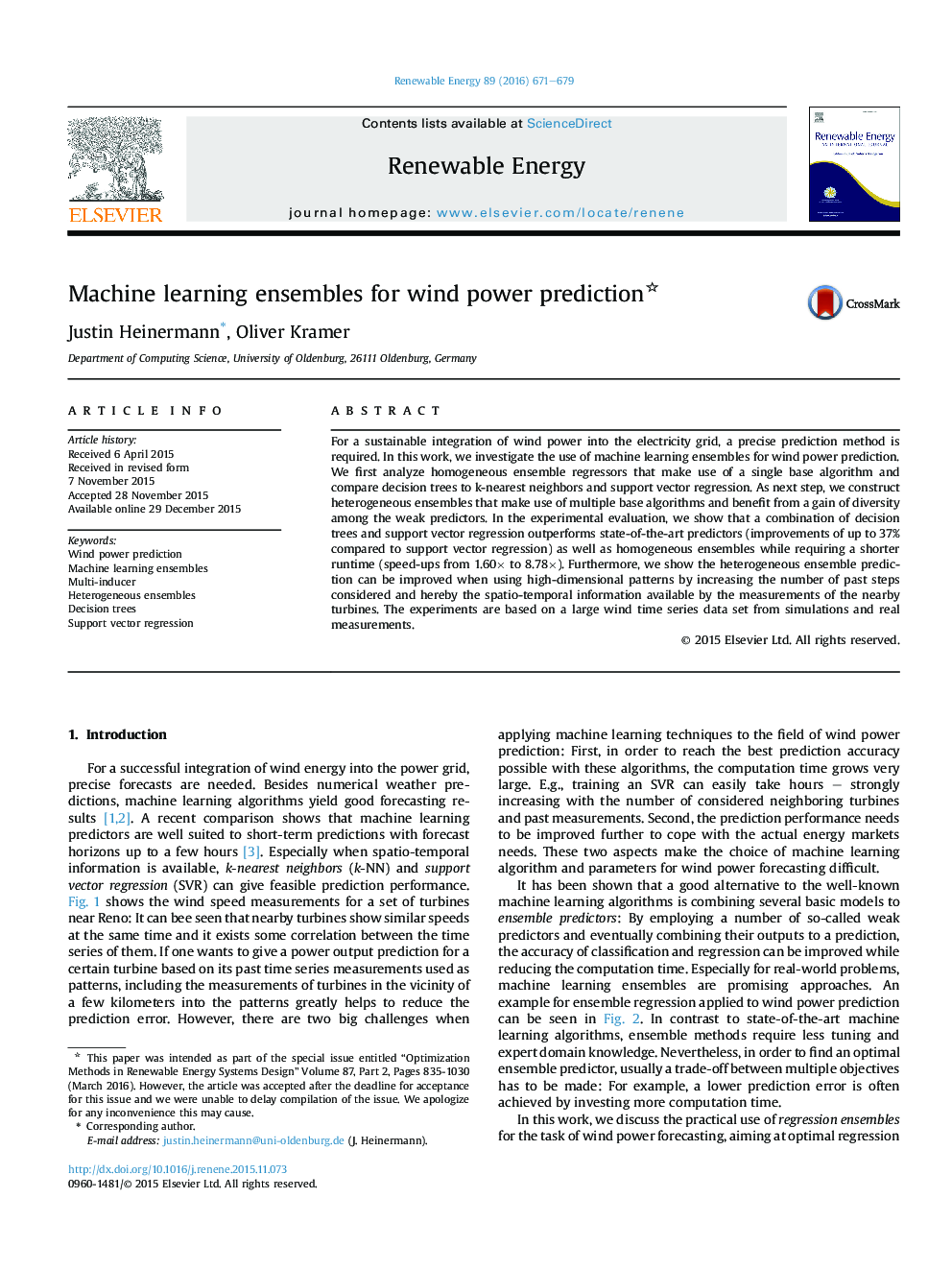| Article ID | Journal | Published Year | Pages | File Type |
|---|---|---|---|---|
| 6766518 | Renewable Energy | 2016 | 9 Pages |
Abstract
For a sustainable integration of wind power into the electricity grid, a precise prediction method is required. In this work, we investigate the use of machine learning ensembles for wind power prediction. We first analyze homogeneous ensemble regressors that make use of a single base algorithm and compare decision trees to k-nearest neighbors and support vector regression. As next step, we construct heterogeneous ensembles that make use of multiple base algorithms and benefit from a gain of diversity among the weak predictors. In the experimental evaluation, we show that a combination of decision trees and support vector regression outperforms state-of-the-art predictors (improvements of up to 37% compared to support vector regression) as well as homogeneous ensembles while requiring a shorter runtime (speed-ups from 1.60Ã to 8.78Ã). Furthermore, we show the heterogeneous ensemble prediction can be improved when using high-dimensional patterns by increasing the number of past steps considered and hereby the spatio-temporal information available by the measurements of the nearby turbines. The experiments are based on a large wind time series data set from simulations and real measurements.
Related Topics
Physical Sciences and Engineering
Energy
Renewable Energy, Sustainability and the Environment
Authors
Justin Heinermann, Oliver Kramer,
